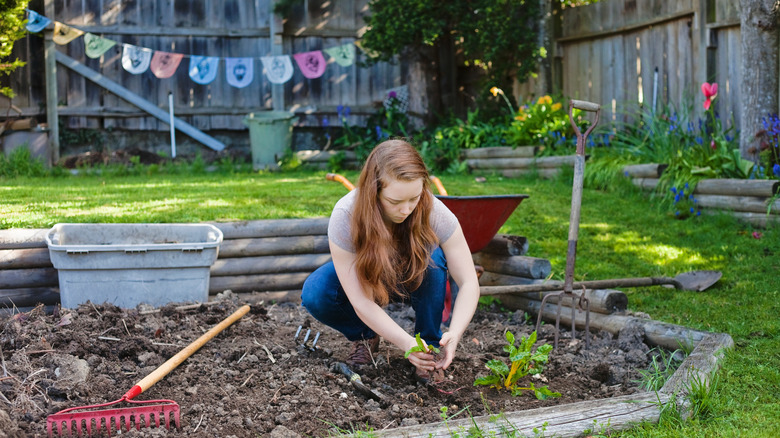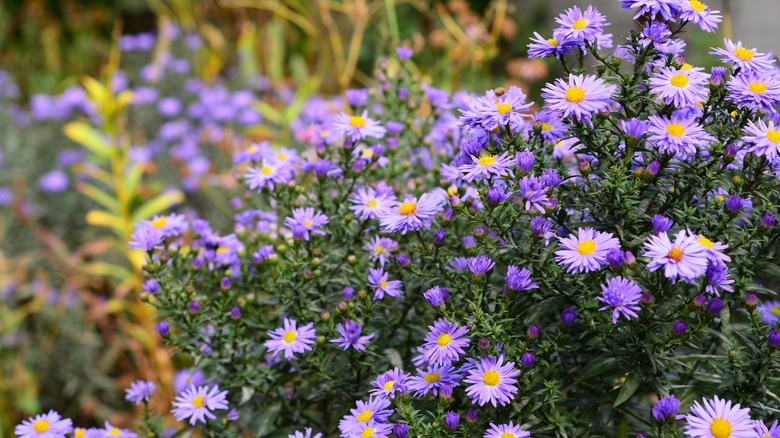When Should You Divide Your Asters?
Growing asters takes time to perfect — even in their growing stage, they can still go through a few bumps in the road. Once your asters are a few years old, you may begin to notice them looking sparse in their foliage, their stems falling over, or their centers dying. Once this begins to occur, it's time to divide them. Separating your asters prevents them from overcrowding each other and promotes healthier growth for years to come.
In addition, dividing your asters gives them a chance to make new blooms. Think of it as a reset button. When they're slowly wilting, all they need is a minor cleanup. Dividing asters helps reduce clumps in their soil and roots, which increases airflow and prevents soil-borne diseases. It also ensures your garden beds stay tidy looking and not overrun with a-little-bit-too-wild flowers. But you shouldn't divide your asters just any time of the year. Instead, wait for the spring.
When to divide asters
Spring is the best time to divide your asters before they start to show signs of new growth, as they'll have enough time to establish over the summer. They'll be ready for their bloom period by late summer and fall. Dividing asters in the summer can be quite stressful to the plant, so only do it if there's no other option. These flowers can also be divided in the early fall, as long as they'll have some time to recover before the first frost. But spring is the best time to divide them, keeping it low-stress for the beautiful blooms.
Asters should be divided every three to four years, so you'll want your asters to be planted in your garden for a few years before attempting to divide them. They'll bloom better once they've been divided and replanted in a new location, giving you years more of blooms from your divided perennials.
How to divide your asters
Before dividing your asters, water their soil so they're easier to work with, as moist soil allows you to pull out the flowers easily. After the water has seeped deep into the ground, reaching the roots, use a spade to dig into the soil at a 45-degree angle around the entire plant to loosen it up. Ensure you avoid hitting the roots to prevent damaging them. Then, pull out the root ball, shake off as much dirt as you can by hand, and use your shovel to help you remove extra dirt. Divide the aster by cutting the root ball down the middle with a shovel, saw, or knife, depending on how big the plant is.
When you've separated your asters, clean up your garden to prepare it to plant your newly-divided asters. Remove weeds and debris and make a hole wide and deep enough for the aster. Place the roots into the ground, then top it off with potting soil, gently patting down the soil around the plant. Finally, water the aster to settle the soil. As for the other half of the aster, you can plant that half back where it was before, or put it in a container with potting soil.

